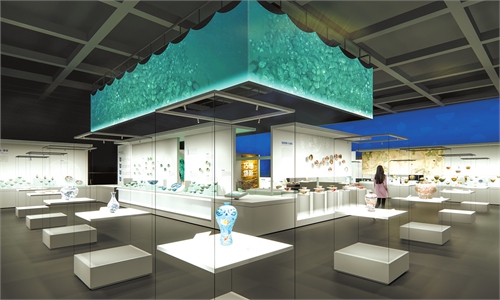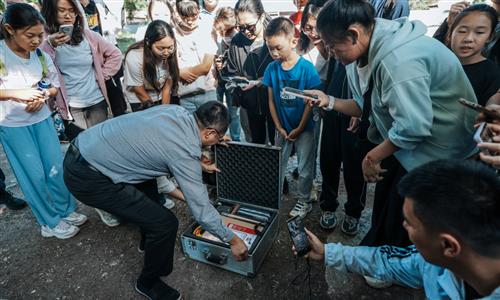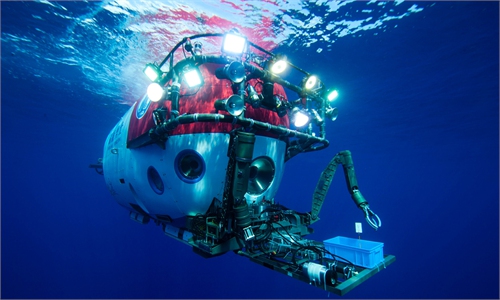ARTS / ART
Archaeological lab established as China excavates for largest underwater shipwreck
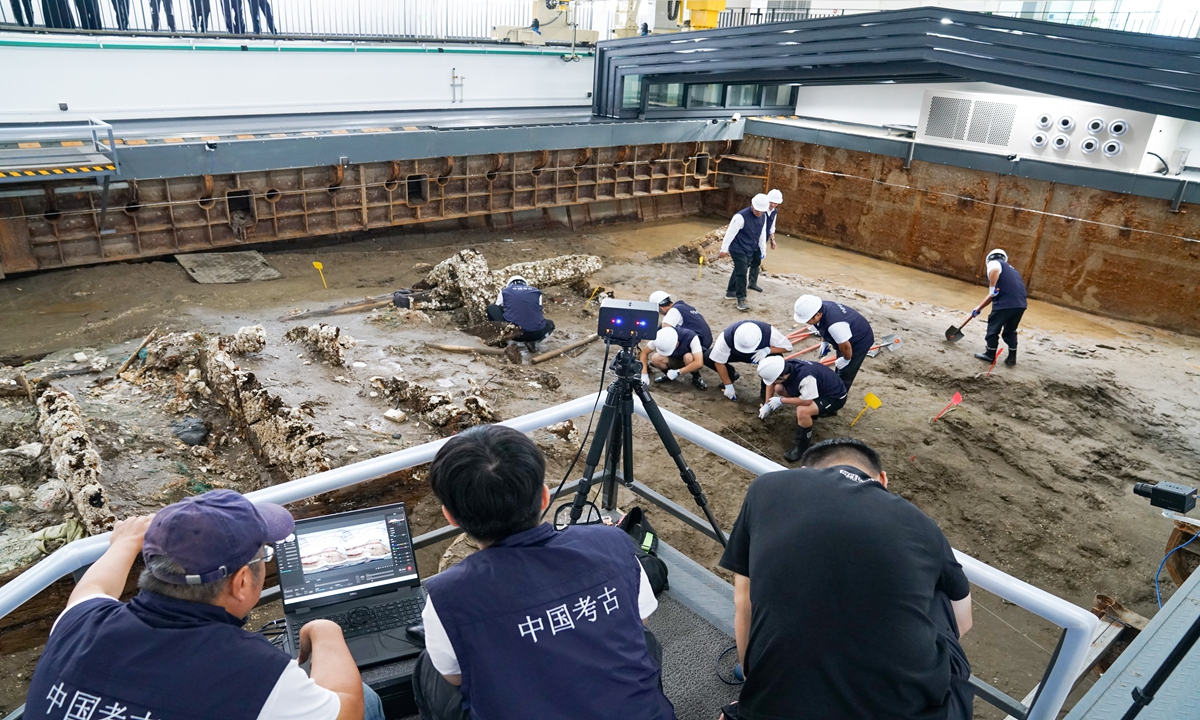
Chinese researchers are uncovering relics at the workstation Photo: Courtesy of Shanghai Museum
"The trial excavation of the Yangtze River Estuary No.2 ancient shipwreck has begun!" As a command was given at a dock of the former Shanghai Shipyard site along the Yangpu waterfront, a large black glass archaeological preservation chamber with steel frame was opened, and a group of Chinese archaeologists entered the chamber to start uncovering and researching the relics present on the ship.
Despite being raised from the riverbed nearly two years ago, the ancient wooden shipwreck - recognized as the largest and best-preserved ever discovered in China - remains largely covered by mud, making it difficult to fully reveal its true appearance.
The ship relic is now housed in a 48-meter-long intelligent preservation chamber.
To better address the challenges of excavating and protecting fragile organic artifacts in complex underwater environments, a dedicated archaeological workstation was established for research on the Yangtze River Estuary No.2 ancient shipwreck.
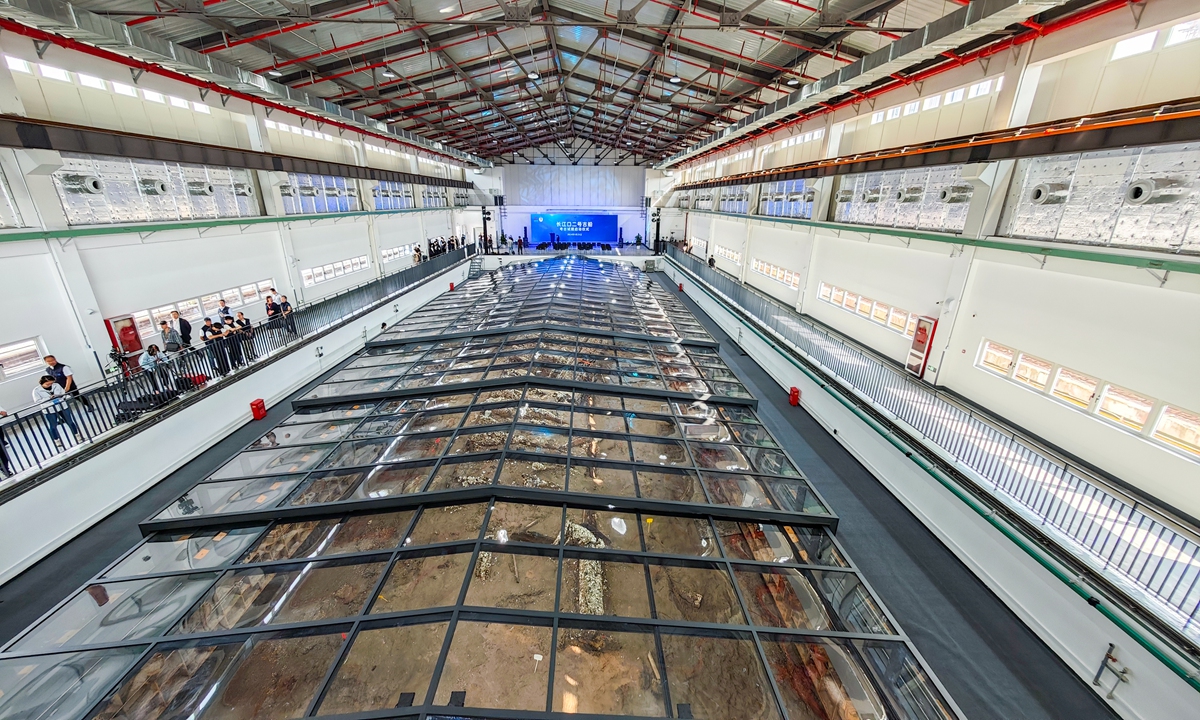
The archaeological preservation chamber Photo: Courtesy of Shanghai Museum
Spanning a total area of 3,671 square meters, the new archaeological facility features a system of multifunctional underwater archeological laboratories, which include an intelligent protective chamber, a comprehensive excavation platform, and a conservation laboratory. This system is the largest and most advanced archaeological workstation of its kind in the country.
As the first large-scale underwater artifact laboratory system developed with independent intellectual property rights in China, this multifunctional underwater artifact laboratory provides comprehensive capabilities currently available in the field of underwater archaeological research.
Its establishment will fill a gap in conducting large-scale underwater archaeological work in China and enhance the capacity for excavation and preservation of underwater cultural relics, according to the introduction sent to the Global Times by Shanghai Museum, which plays a key role in the archeological excavation and research into the shipwreck.
The shipwreck contains a diverse array of cultural relics expected to yield valuable insights into the ships of the late Qing Dynasty (1644-1911). Moreover, a significant number of cultural relics are anticipated to be found, contributing to research on shipbuilding, the shipping industry and ceramic production in China and the world.
During the excavation, the archaeological team will also conduct technological analysis and research, utilizing methods such as sedimentology, zooarchaeology and molecular archaeology to interpret both visible and invisible historical information contained in the ancient ship, including its routes, sinking environment, and the living conditions aboard the ship.
The trial excavation is expected to conclude by January 2025, and the formal excavation is set to be completed by 2027.
China's underwater archaeology has been developing rapidly in recent years. Besides the archaeological project regarding the Yangtze River Estuary No.2 ancient shipwreck, an investigative project of two shipwrecks discovered in the South China Sea has found artifacts including ceramics, bronzeware, copper coins, objects made of bamboo and wooden items, which have been put on display at the China (Hainan) Museum of the South China Sea since September 27.
The two shipwrecks on the northwestern slope of the South China Sea, at around 1,500 meters deep, fall under the category of deep-sea archaeology.
The excavation was also made possible through China's advanced deep-sea technology and archaeological survey equipment. For example, experts utilized 3D laser scanners and blowing devices to conduct the excavation.

